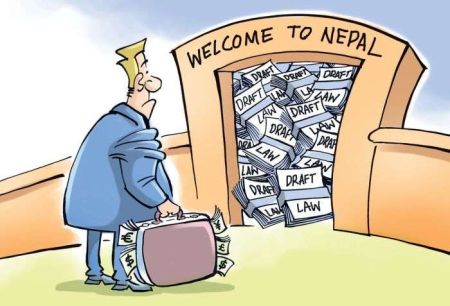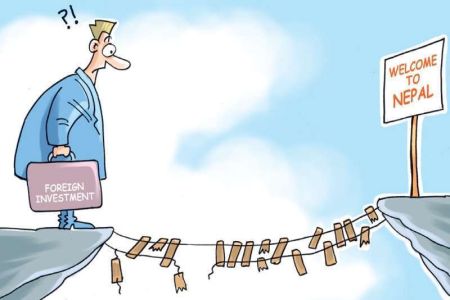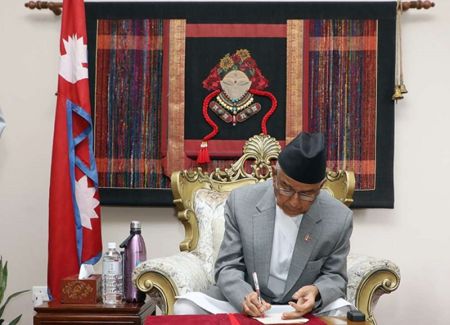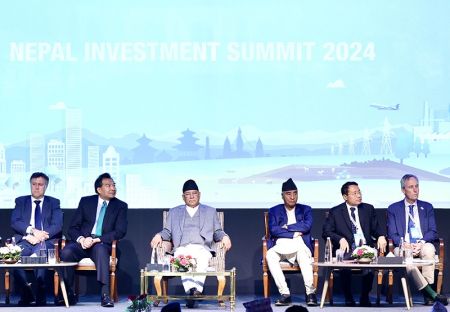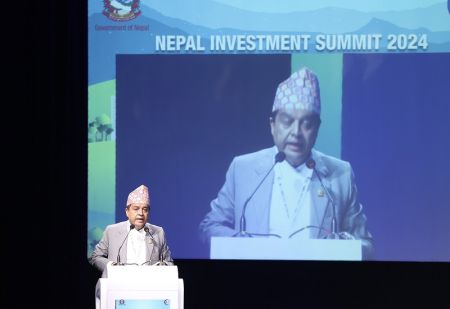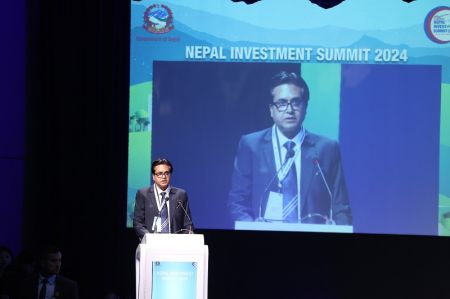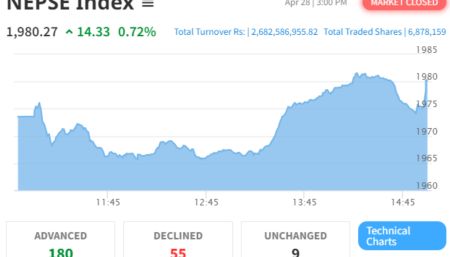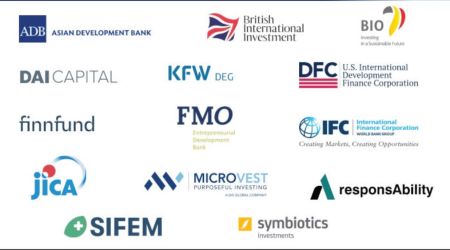Er Gyanendra Lal Pradhan, a hydropower specialist-cum-entrepreneur is an electrical engineer by training. He is currently the Executive Chairman of Hydro Solutions Pvt Ltd. He is also the Executive Member of Independent Power Producers’ Association, Nepal (IPPAN), Federation of Nepalese Chambers of Commerce & Industry (FNCCI) and SAARC Chamber of Commerce & Industry, Nepal. Er Pradhan has initiated a number of successful projects and enterprises of varied scope and sizes in his 25 years of career. He has received the prestigious ‘Manager of The Year 2006’ award from Management Association Of Nepal (MAN) and ‘Excellence Award 2010 in Energy (Hydropower)’ from Hydro Nepal-Journal of Water, Energy and Environment. He has also won several other recognitions for his contributions to hydropower and clean energy. He has visited over 100 hydro power plants of 1 KW to 18,600 MW capacity in over 20 countries. In an interview with New Business Age, Er Pradhan shared his views on hydropower sector in Nepal and what can make it a booming success in the country. Excerpts:
How do you assess the overall development of hydropower sector in the country in last couple of decades?
The private sector started investing in hydropower after 1990 following the liberal policy adopted by the government. But there was a lack of favourable work environment due to the decade-long insurgency in Nepal. Even for the period between 2000 and 2005, you could hardly brand this sector as lucrative. However, after 2005, well-to-do and influential people including politicians have been investing and maintaining shares in hydropower projects. Today, all political parties have hydropower development as the topmost agenda in their manifestos. Though we are not late in identifying the sector’s immense potential, we must make it work now. The private sector has come forward promising to develop 2,000 MW while the government has projects for 600 MW under construction. Another 250 MW has been added recently. So, we have been making some progress indeed over the last five years or so. But, like I said, it’s about time we gave topmost priority to hydropower development in Nepal’s interest.
Despite having vast water resources, why has Nepal not been able to exploit it to the maximum?
The earth’s surface area is dominated by water at 70.8 per cent but the proportion of clean or fresh water is three per cent only. From that perspective, we are extremely lucky to have 20,000 litres of clean water per person per day in Nepal. However, water mismanagement in our country has led to where we stand today. There is no water in the tap and no water for irrigation and electricity either. You must remember that water can never be regenerated. Projects such as the ones related to irrigation can never be sustainable because they do not have adequate output income. These need to be related to hydropower because the income generated from electricity can pay for such projects. If you look at the projects today, they sustain because revenue from electricity has helped make water available at affordable prices to farmers and the common people. Flood control, irrigation, fishery and electricity should go hand-in-hand wherever possible; there are many projects in Nepal which prove this point.
Have we become over-optimistic due to climate change? What does global warming mean to Nepal?
Yes, the nature provides us clean water through snow glaciers and the glacier melting is helping us provide water throughout the year. If global warming continues at the current level, it will adversely affect several parts of the world. We will have fewer glaciers of course but it will not affect Nepal much. We get rainwater in excess of 225 billion cubic meters so we are getting more rainwater than the water from the glaciers. Therefore, our water level has not receded overall. In fact, global warming has helped us have more clean water as we have been receiving greater rainfall during monsoon. A majority of Nepal’s cities and towns are situated at an elevation. Hence, they don’t fall in the flood-prone zone. We have over 6,300 rivers and rivulets and thousands of hills and valleys. If we could block the water in these valleys, we can conserve the rainwater and it can be a huge asset. Water is like oil (energy) for us, it’s a blessing for the hydropower sector.
What is your analysis of the debate on power production for external versus internal consumption?
Without any doubt, the first need is that of domestic consumption. The current load-shedding problem may seem a big issue right now but it can definitely be dealt with over the next four years or so. In fact, we will also have surplus with us which we should look at exporting. This country will collapse if we don’t export hydropower in the near future because we have so much to import which we need to compensate with exports. For example, iron and steel is our most exportable item at over Rs 10 billion but the net saving is only 15 per cent as 85 percent money is spent on importing raw materials. On the other hand, if we could export hydropower for the same worth, 85 per cent of the money would stay in Nepal itself. There is huge value addition when it comes to hydropower. But if we can’t use the water today, we will have new water tomorrow and it continues in that manner. We are sending precious foreign currency abroad for importing petroleum because we are not exploiting our water resources.
Talking about alternative energy, can it be adequate for household needs? Further, do you see it contributing to industrial growth in some way?
To tell you the truth, solar energy generates only 12 MW in Nepal which can’t end load-shedding. Do you think solar energy can meet our current requirement of 2,500 MW? The solar sector was given subsidy which yielded practically no result. There would be 2,500 MW of sustainable hydropower if hydropower sector was granted the same amount of subsidy. We won’t need any battery and there would be no pollution either. However, I do agree that solar energy must exist for people living in high mountains for the sake of social justice as we cannot take electricity to those areas with the same ease as solar energy. Other alternative energy sources such as wind too cannot support any economic activity, leave alone industrialisation. There is a potential for wind energy in Mustang and Kali Gandaki corridors but why would you generate wind at Rs 10 per unit when you can do the same at Rs 5 per unit from water flowing below these very corridors. Besides, you have to invest heavily to create necessary infrastructure on top of the mountains. Saudi Arabia gets so much of sunlight but it has no solar energy. It doesn’t have to look elsewhere because of its abundant oil resources. Similarly, we have hydropower in Nepal so we must focus on developing it instead of looking at the so-called alternatives that are not cost-effective at all.
The government has increased 20 per cent on PPA rates but you don’t seem to be satisfied. What is your idea of a good deal?
I will give you the numbers. Let me tell you that rates cannot be negotiated behind closed doors. Only a few Nepali companies can build projects upward of 25 MW individually because the high degree of technical and financial capacity required for building such projects may not be at the disposal of most companies. More than 95 per cent of the projects being built by Nepali entrepreneurs are below 25 MW capacities. These projects would produce power at only Rs 5.45 per unit for a 30-year average while 25 MW and above projects are built at a lesser cost and can generate power at Rs 7.50 per unit for the same period. Even the projects promoted by Nepal Electricity Authority (NEA) staff have been promised Rs 5.54 per unit. From a distance, it seems that 20 per cent has been increased on existing PPA rates for private sector investors. However, escalation has been brought down to five years from the earlier nine years. So, in effect, the net increase will come to 10 per cent only. After the increase, the rate has barely managed to reach Rs 6 per unit which is a discriminatory practice being pursued by the state. The so-called increase of 20 per cent for private sector investors is an illusion. We are not even asking for a rate of Rs 7.50 per unit. We are confident in our belief that if we are given Rs 6.50 per unit, besides being a rupee cheaper, some more projects may want to invest in this crucial sector.
Despite all the fuss, private sector investment is not coming forth for hydropower development. Why so?
Well, nobody invests in a business to make losses and hydropower is no exception. The prospects must be commercially viable for any investment to come in. Further, the banks have invested a whopping 70 per cent of the total money involved in hydropower. If they have to additionally invest crores of rupees every year for infeasible projects, they are not going to finance. Therefore, no private sector project is going to invest willingly given the current situation barring a couple of projects who may invest to honour license validity.
The government has proposed to establish a separate bank for hydropower development. Do you endorse the idea?
We have given the government a figure of 2,500 MW to end load-shedding. We need an investment of US$ 5 billion for this. So, over the next four-and-a-half years, we will require Rs 350 billion. It is only possible if we use half the amount in the banking system of Nepal which has a total of Rs 700 billion. Given this situation, the state has to bring foreign investment as it is difficult for the private sector to do so.
It is good to open a bank but do we really need one? It is better to have a fund manager. We have a few failed examples from the past – the state floated Agricultural Development Bank which has failed to increase agricultural production in the country. Today, the farmers take the most expensive loans from this bank at a monstrous 18 per cent. Nepal Industrial Development Corporation (NIDC) promised to boost industrialisation but now all the money has gone down the drain in the industry sector. Going by these examples, what is the logic in opening ‘another bank’? c by getting funds from abroad at 1.75 per cent and give it to commercial banks, both state-owned and private sector, and ask them to invest in certain sectors. For example, they can give it to the banks at 5 per cent and ask them to invest it at 8 per cent. It will solve the problem of interest lending and fulfill fund requirement as well. The state should manage fund and monitor it accordingly instead of opening a bank and turning it into a business proposition.









